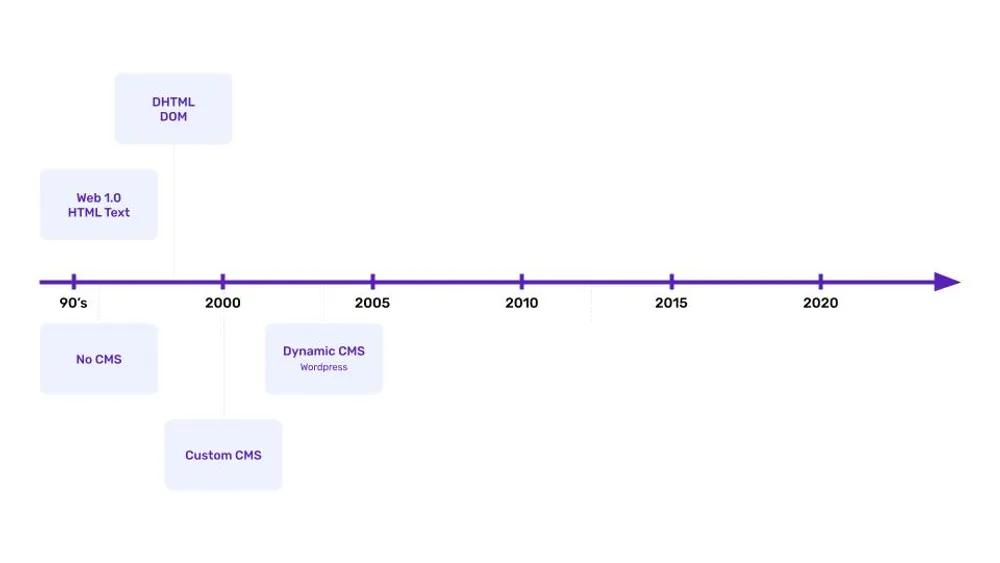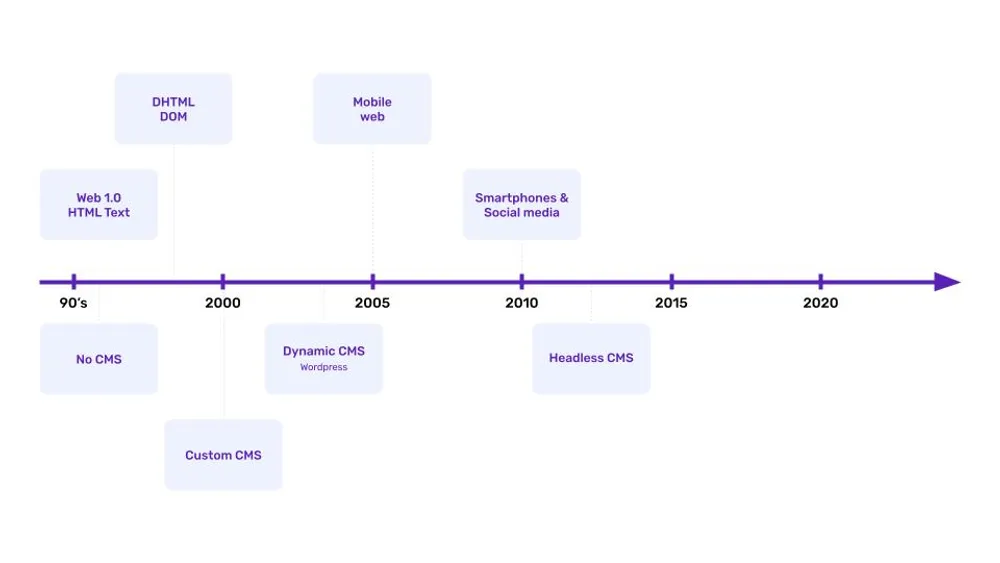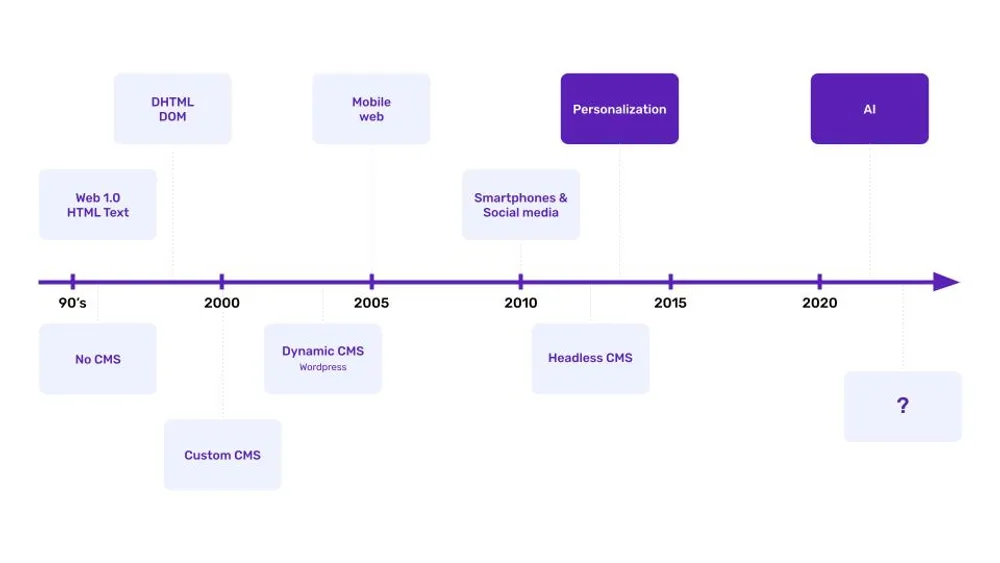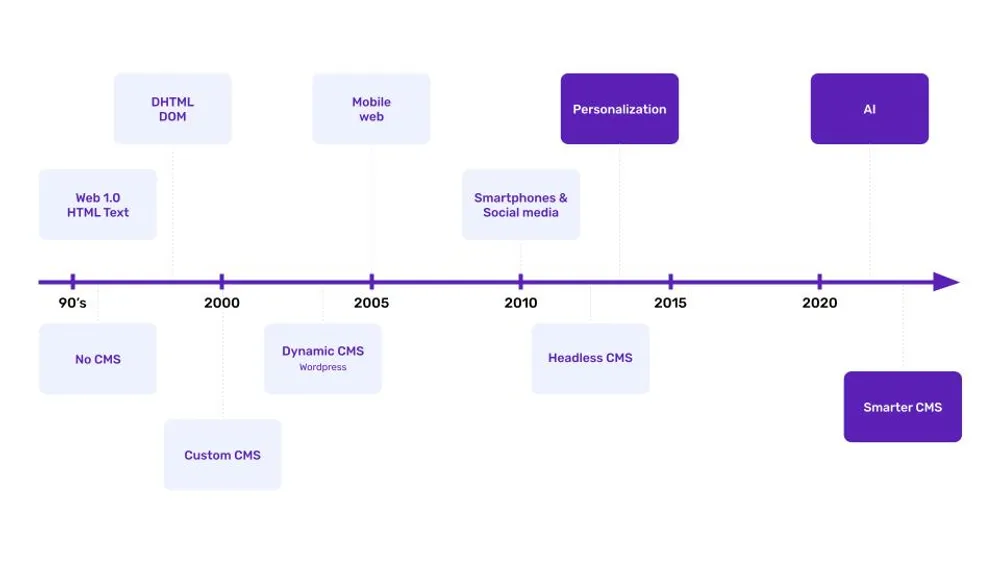Looking back at how the web has grown and how content management systems (CMS) have evolved, we see that each big change in the web brought a new kind of CMS. For example, the rise of mobile web, smartphones, and social media led to the need for omnichannel solutions, resulting in headless CMS.
As we move forward, we'll explore how headless web development is driving the future of CMS, making it more future-proof for the digital world.
The Birth of the Web and Static Websites
To understand the history of CMS, we must first revisit the early days of the World Wide Web. Tim Berners-Lee's invention of the web in 1989 marked the beginning of a new era. In the early 1990s, websites were static and hand-coded. Each web page had to be manually updated by editing HTML files, making it a cumbersome and time-consuming process. This gave rise to the need for a more efficient way to manage web content.

Dynamic HTML & and the Rise of Future-Proof CMS
Dynamic HTML (DHTML) was a big step forward in web development in the late 1990s and early 2000s. It allowed developers to make web pages more interactive by changing the Document Object Model (DOM). After DHTML, the first content management systems (CMS) appeared. These early CMS platforms, like Blogger and WordPress, made it easier for website owners to update and maintain their sites by separating content from design. These early systems set the stage for future-proof CMS solutions like headless CMS, which offers greater flexibility and adaptability in the digital world.
WAP and the Evolution of Headless Web Development
In the early days of the mobile web, the Wireless Application Protocol (WAP) played a key role in making the internet accessible on small screens with limited bandwidth, giving us an early look at mobile internet.
As the internet grew, so did the need for more powerful content management systems (CMS). Traditional CMS platforms like Drupal and Joomla became popular because they could handle complex content, user management, and customization through plugins and themes. These systems made it easier for organizations to manage large websites.










